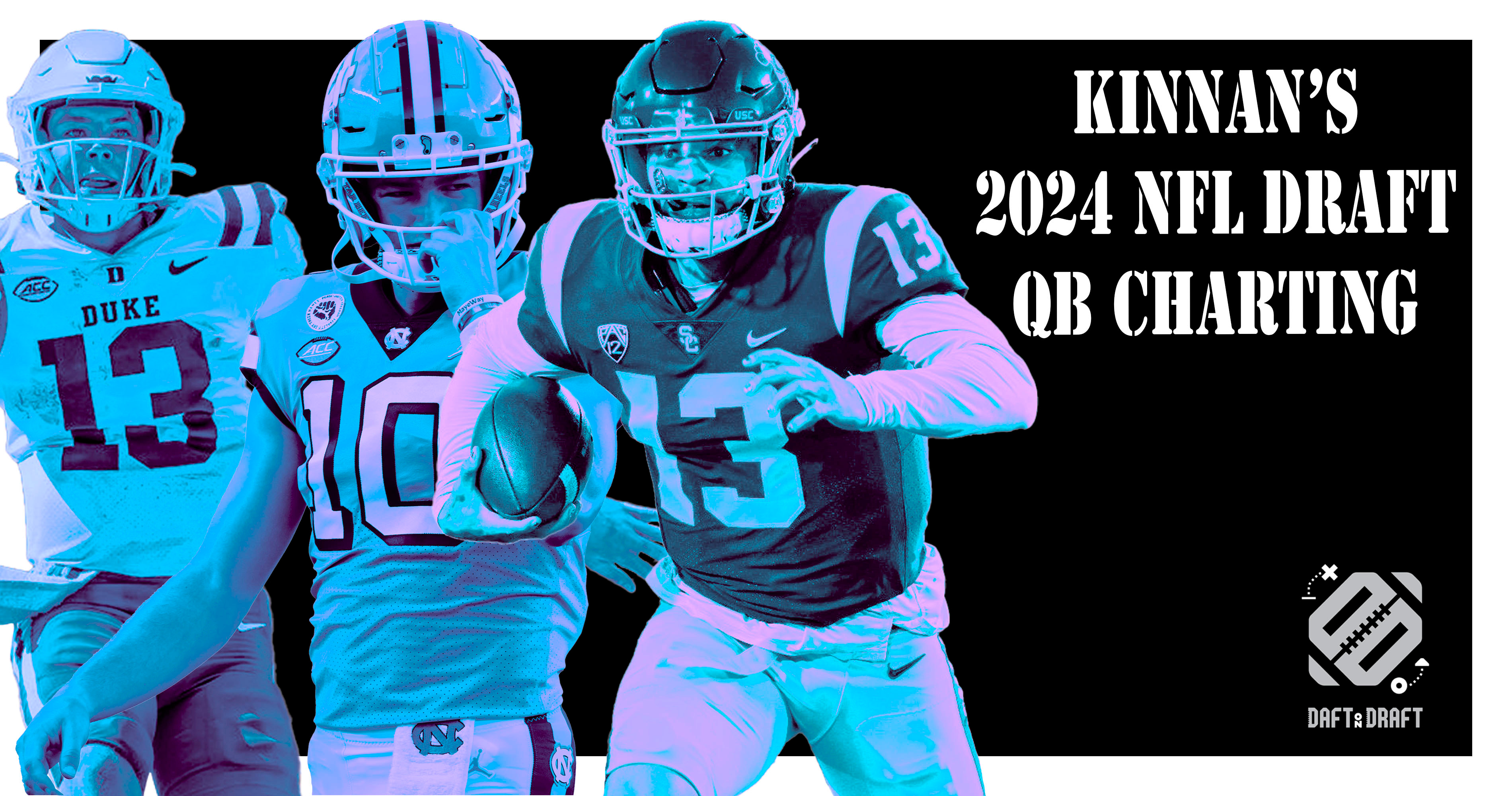2024 NFL Draft: How accurate are Caleb Williams, Drake Maye, and the rest of the class?
Caleb Williams and Drake Maye headline a talented 2024 NFL Draft class of quarterbacks. Just how accurate are these gunslingers though? I've got your answer.
Now entering year four of charting quarterbacks, the 2024 NFL Draft Weighted On-Target Percentage. In a deep class highlighted by USC’s Caleb Williams and North Carolina’s Drake Maye, determining how accurate a quarterback is when slinging the ball around the field is a crucial piece of context.
And that is what I hope to continue to do here. Throw out completion percentage. Bring in Weighted On-Target Percentage (WOT%).
Not every completion is the same. Superstar quarterback Josh Allen is a great example of this. His short game stinks. He has never executed it at a high level. However, he creates a handful of more valuable chunk plays that mask and surpass any inadequacies he has in the short game.
Keep up below as I will continue to add week-to-week, quarterback by quarterback:
The Theory behind WOT%
Through WOT%, I assign a higher level of weight to those throws that will equate to a higher Expected Points Added (EPA), and that translates to explosive plays at a higher clip. I weigh the throws that tend to be more volatile. The harder they are to complete consistently, the higher the weight.
This allows me to get a better reading of which quarterbacks truly are the most accurate and explosive down the field without completely discrediting the need for the short game week in and week out.
The ability to operate the short game raises the floor. This is why I like the long-term outlook of Bailey Zappe and Jake Haener as career backups/spot starters. They can execute at a high level. However, both lack game-breaking tools.
The ability to create explosive plays down the field raises the ceiling. This is what makes Allen special.
There is an added weight for out of structure throws and throws beyond the first read as well. Quarterbacks who can extend give their teams a better chance at shaking free down the field. Quarterbacks at the college level who come from an offense that requires them to do more than spam RPOs will have an easier transition to the NFL. These are important as well, which is why I added them last year.
Quarterbacks who are more efficient at the more explosive levels of the field, assuming they do not crumble out of structure, beyond their initial read, and are not tumultuous elsewhere, are going to get elevated.
How to interpret the charts
Reading the charts is pretty easy, but here is a glossary:
Green: Completed attempt, on-target
Blue: Incomplete attempt, on-target
Red: Incomplete attempt, off-target
Yellow: Completed attempt, off-target
Black: non-chartable throw (jet pop passes, clocked footballs, throw-aways, QB/WR miscommunications, etc.)
O: Out of structure attempt
+: attempt beyond QB’s first read
One throw can only be one color. However, if you see an O next to a throw, that indicates that attempt was outside the confines of the structure of the play. This is when a pocket collapses and a quarterback is forced to make something happen on his own with his legs and extend.
Let’s use this chart of Colorado quarterback Shedeur Sanders’ electric performance against vs. TCU as an example.
As you can see, there are red, blue, and green passing attempts. By digesting this chart then, we can see that Sanders, who already put up a lethal passing line of 510 yards and four touchdowns while completing 80 percent of his passes, should have had an even more dynamic outing. Six passes, including four of over 25 yards in depth, went through the hands of receivers in this one. This is indicated by attempts in blue.
All of the + signs over the middle of the field are indicative of a quarterback who was able to find backside stops, digs, and more when the frontside of the play was not there for his taking. This helps to understand which quarterbacks are 1. forced beyond their first read as opposed to RPO-pilled offenses that hardly ask their quarterbacks to move their eyes, and 2. which quarterbacks show comfort flipping their eyes and can accurately throw a football when doing so. Sanders was quite elite against TCU in this regard as well.
So when comparing Sanders’ already high 80 percent completion percentage, we can see that his adjusted completion percentage should have been an eye-popping 89 percent when taking into account the on-target passes that hit the turf.
Have any questions?
Feel free to reach out to me either on here through the chat function or on Twitter at @fakecorykinnan!




